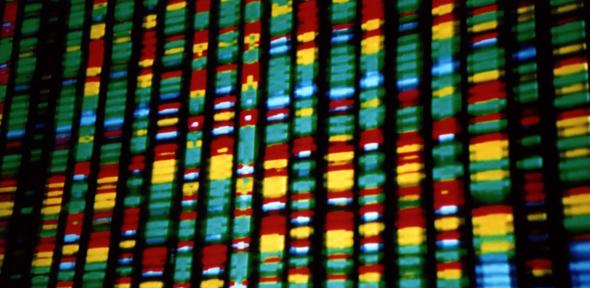
Endometrial cancer affects the lining of the uterus. It is the fourth most commonly diagnosed cancer in UK women, with around 9,000 new cases being diagnosed each year.
Researchers at the University of Cambridge, Oxford University and QIMR Berghofer Medical Research Institute in Brisbane studied the DNA of over 7,000 women with endometrial cancer and 37,000 women without cancer to identify genetic variants that affected a woman’s risk of developing the disease. The results are published today in the journal Nature Genetics.
Dr Deborah Thompson from the Department of Public Health and Primary Care at the University of Cambridge said: “Our findings help us to paint a clearer picture of the genetic causes of endometrial cancer in women, particularly where there no strong family history of cancer. Prior to this study, we only knew of four regions of the genome in which a common genetic variant increases a woman’s risk of endometrial cancer.
“In this study we have identified another five regions, bringing the total to nine. This finding doubles the number of known risk regions, and therefore makes an important contribution to our knowledge of the genetic drivers of endometrial cancer.
“Interestingly, several of the gene regions we identified in the study were already known to contribute to the risk of other common cancers such as ovarian and prostate.
“Although each individual variant only increases risk by around 10-15%, their real value will be in looking at the total number of such variants inherited by a woman, together with her other risk factors, in order to identify those women at higher risk of endometrial cancer so that they can be regularly checked and be alert to the early signs and symptoms of the disease.”
The study also looked at how the identified gene regions might be increasing the risk of cancer, and these findings have implications for the future treatment of endometrial cancer patients.
“As we develop a more comprehensive view of the genetic risk factors for endometrial cancer, we can start to work out which genes could potentially be targeted with new treatments down the track,” said Associate Professor Amanda Spurdle from QIMR Berghofer.
“In particular, we can start looking into whether there are drugs that are already approved and available for use that can be used to target those genes.”
The study was an international collaboration involving researchers from Australia, the United Kingdom, German, Belgium, Norway, Sweden, the United States and China. The UK part of the study received funding from Cancer Research UK.
Dr Emma Smith, Cancer Research UK’s science information manager, said: “The discovery of genetic changes that affect women’s risk of developing endometrial – or womb – cancer could help doctors identify women at higher risk, who could benefit from being more closely monitored for signs of the disease.
“It might also provide clues into the faulty molecules that play an important role in womb cancer, leading to potential new treatments. More than a third of womb cancer cases in the UK each year could be prevented, and staying a healthy weight and keeping active are both great ways for women to reduce the risk.”
Reference
Cheng, THT et al. Five endometrial cancer risk loci identified through genome-wide association analysis. Nature Genetics; 2 May 2016; DOI: 10.1038/ng.3562
An international collaboration of researchers has identified five new gene regions that increase a woman’s risk of developing endometrial cancer, one of the most common cancers to affect women, taking the number of known gene regions associated with the disease to nine.

The text in this work is licensed under a Creative Commons Attribution 4.0 International License. For image use please see separate credits above.